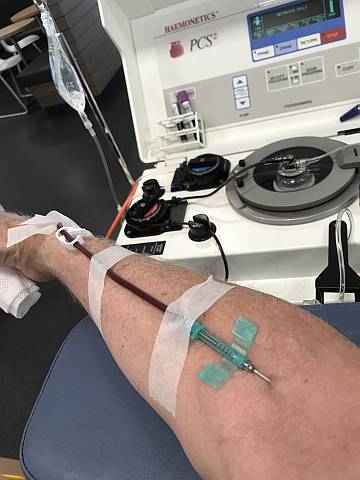Donating plasma
While on the subject of blood...
|
You can donate whole blood every three months, plasma every two weeks.
If you can do some good, at very little trouble to yourself, why would you not? I have written elsewhere about compassion, contributing to your society and ethics. Another way that you can do some good anywhere you go is by picking up rubbish; there's no shortage of it on most roadsides and picnic areas.
And all of us should be doing everything we can to try to minimise climate change if we have any care for those who will come after us.
We all have a choice in what we try to do with our lives; many people decide that chasing money or power is what they should aim at, there are far better choices.
